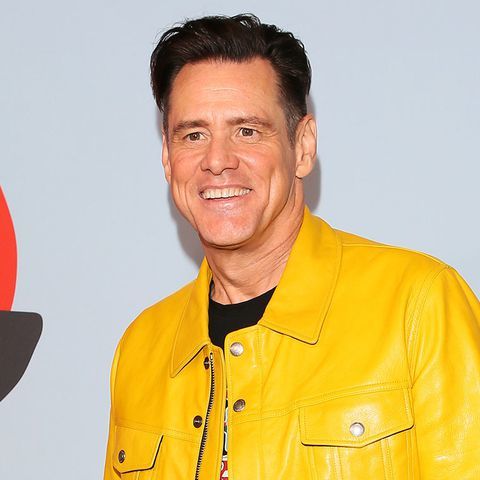Leslie Glass's Blog, page 291
March 4, 2019
My Path To Healing Emotional Abuse
Healing emotional abuse takes a lot of self-awareness and time. So don’t beat yourself up for behaviors and feelings that linger. Emotional abuse is damaging and takes a lot of forms, but what is it exactly? Emotional abuse is fundamentally someone exerting control over you for their own purposes or reasons that have nothing to do with your best interests. You may not be aware that destructive conditioning takes place over a long period of time.
Destructive Conditioning Takes Time
No one suddenly turns into a people-pleasing wimp, willing
to take anything. You are slowly molded into a person who puts up with way more than you should. Often you become a people pleaser to avoid the consequences of not doing whatever your controlling person wants you to do. And worst of all, your controlling person (abuser) is someone you love with all your heart. Sometimes there’s more than one in your life, and these people steal your spirit and your
will.
How Does Emotional Abuse Work
Say your dad wants you to be thin and tells you you’re too big. Say he watches the amount of food you eat, but pigs out himself. The things he says hurt your feelings and make you feel crazy since, guess what, he’s way heavier than you are. You may never wonder “Who is he to judge me?” You haven’t had a chance to think he may be wrong. And he may do many worse things than calling you names.
Here’s Another Example Of Emotional Abuse
Say, your mom wants you to be her constant companion and has
spent a lifetime preparing you for the role. She’s always made it difficult for you: to take trips, go to college, make friends, have a boyfriend (girlfriend), get a job far away. She tells you that you’re a dreamer and won’t succeed. She complains about her problems, and she always has a crisis she needs your help to
fix. She calls you at work and interferes with your plans. You have a lot of trouble saying no. She gets sick or mean when you don’t do what she wants. You feel helpless to assert yourself. Insert, husband, boyfriend, girlfriend, cousin, buddy, boss, sister. Anyone can be an abuser of your feelings, your boundaries, your very safety.
You Can’t Make Abuse Stop
There are many kinds of abuse, and abuse manifests itself in a wide variety of ways. The sad thing is you can’t stop someone from trying to control you and end up abusing you. You can try to set boundaries, but people don’t like to change especially when their interests are not served. Safety first. If you are being physically abused or a child is being abused, the only way to stop it is to leave. With emotional abuse, awareness is the first step, and action is necessary. A divorce finally happens. You break up. The decision to spend less and less time with family members is now okay. You may even move away. It happens a lot, especially in families when some members are in recovery and others are not. But how to heal your soul and spirit?
Healing Emotional Abuse Starts With The Question What Do You Want
For me, the path to healing was paved with a therapist asking me what did I want? Literally every week. Every stepping stone to my recovery began with the same question. Frankly, I didn’t know. I was so used to acting as a doormat for others, trying to please and fix things that I couldn’t imagine helping, pleasing, doing things for myself. I didn’t know how. Often in my old life, I would try to say what I wanted but never got what I wanted. So, I gave up my power to ask and to choose for myself. As I said before, the first step to emotional healing is to detach, leave, get away from the person(s) who hurt you. They will try to hurt you more as you leave, but you have to detach for your own sanity. If you need help, get a therapist, counselor, lawyer, hotline.
Who Do You Want To Be
The next step is slowly, slowly identifying what you want for yourself. It’s a big question that ripples out. Where do you want to live? What do you want to do? How do you want to spend your money and your time? How do you should you interact with other people? How do you begin setting boundaries in new relationships? For some people, just having a supportive group, or friend is a big step to healing from control.
Self Esteem Grows With Making Healthy Choices
Healing emotional abuse means establishing your self-esteem and feeling okay about yourself, maybe for the very first time. The healing begins when you can identify who you are and what you want. Then you can start making your own choices about the smallest to the biggest things in your life. You can have a puppy, go swimming, enjoy the sunset without a fight, make a friend, go to a meeting. You are you, and that’s awesome. Healing is a miracle we can all achieve with help and support.
The post My Path To Healing Emotional Abuse appeared first on Reach Out Recovery.
7 Ways Narcissists Manipulate Relationships
From Preston Ni M.S.B.A. @ Psychology Today: “Some people try to be tall by cutting off the heads of others” — Paramhansa Yogananda
“It’s not easy being superior to everyone I know.” ― Anonymous
The Mayo Clinic research group defines narcissistic personality disorder as “a mental disorder in which people have an inflated sense of their own importance and a deep need for admiration. Those with narcissistic personality disorder believe that they’re superior to others and have little regard for other people’s feelings. But behind this mask of ultra-confidence lies a fragile self-esteem, vulnerable to the slightest criticism.”
Narcissistic Supply is a form of psychological addiction and dependency, where the narcissist requires (demands) constant importance, “special treatment”, validation, and/or appeasement in order to feel good about him or herself. This insatiable craving to be “put on a pedestal” explains to a large extent the narcissist’s sense of conceit, entitlement, and self-absorption.
In order to constantly fill their “supply”, many narcissists deliberately find or create scenarios where they can regularly receive attention and the feeling of infallibility. They also purposely target relationships with individuals (victims) who are prone to their initial charm, gullible to their manipulation, and vulnerable to their exploitation. At home or at work, in ways large and small, the narcissist craves constant stroking of their ego. They desperately depend on this “supply” to compensate for their inner emptiness, and relieve their fragile self-esteem.
Below are seven manipulative roles narcissists often enact in order to receive a regular flow of narcissistic supply, with references from my books “How to Successfully Handle Narcissists” and “A Practical Guide for Narcissists to Change Towards the Higher Self”. While some people may engage in one of the behaviors below on occasion, which may not be a major issue, a chronic narcissist will habitually dwell in one or more of the following personas on a regular basis, in order to feel adequate about him or herself.
1. The Self-Anointed Know It All
“My father’s favorite responses to my views were: ‘but…,’ ‘actually…,’ and ‘there’s more to it than this…’ He always has to feel like he knows better.” ― Anonymous
The narcissist may position themselves at home, at work, or in social situations where they present themselves as the “know it all”, “expert”, or “authority”, constantly marginalizing, correcting, and invalidating others’ point of view. Narcissist know it all’s are also frequent conversation hoarders and interrupters. Notably, even when they’re not criticizing or correcting your views, they may listen briefly, and then go right back to what they were talking about, as if what you said didn’t matter at all. You exist merely as a convenient tool for their supply.
“That’s enough of me talking about myself; let’s hear you talk about me.” ― Anonymous
2. The Dominant Controller / Judge / Savior
“These picture frames in the living room are crooked. I TOLD YOU to check when you clean the house. Come-on! Don’t be stupid!!” ― Anonymous husband to wife
The narcissist may target and position themselves in personal or professional relationships with those who allow them to dominate, judge, criticize, or marginalize on a regular basis. The narcissist feels full of themselves by controlling and subjugating others. A variation of this type of social domination is the narcissist who receives his or her supply by “rescuing” others, there by proclaiming himself as the “indispensable savior”.
“Once again, I saved the day—without me, they’re nothing!” ― Anonymous
3. The Merit Badge Collector / Pedestal Seeker
“My accomplishments are everything.” ― Anonymous executive
Some narcissists purposely select professional endeavors where they can be regularly admired and/or feared. In this case, a major reason for the narcissist’s choice is simply to be “superior,” “important,” and “special,” rather than sincerely desiring to make a contribution for the greater good.
“He thinks he is a god because he’s a doctor.” ― Anonymous
“She chose to be (a security officer) so she can be mean to people and get away with it.” ― Anonymous
4. The Manipulator / Exploiter
“Rules are meant to be broken – that’s how you WIN.” ― Anonymous
The narcissist may regularly use their charm, persuasion, or coercion to pressure people into giving them what they want, even when it’s clearly one-sided and unreasonable. Some are particularly fond of manipulating others into surrendering their boundaries. Here, the narcissistic supply is based on others succumbing to the narcissists’ exploitative influence, which they consider “winning” and ego-affirming.
“I take pride in persuading people to give me exceptions to their rules.” ― Anonymous
5. The Grandiose Showoff / Braggart
“She likes to drop the phrase ‘I’m a lawyer’ into every social conversation, no matter how irrelevant.” ― Anonymous
Some narcissists constantly engage in showing off, name dropping, status boasting, or “humble bragging” about how great and wonderful their lives are, in hopes of receiving praise, recognition, and social media attention. They purposely want others to be envious of what they have, in order to feel better about themselves.
“My fiancé and I each drive a Mercedes. The best man at our upcoming wedding also drives a Mercedes!” ― Anonymous
6. The Habitually Difficult / Negativity Seeking Contagion
“My manager is deliberately picky and makes everything difficult. It gives her a sense of power.” ― Anonymous
Certain narcissists are deliberately and persistently difficult, uncooperative, and/or confrontational, even when it is clearly unreasonable and unnecessary to be so. Here, the narcissist supply is the perceived power that comes from being dreaded and disliked. From the narcissist’s toxic and distorted point of view, it is better to be a thorn on the side of others than to be a nobody.
In some cases, although the narcissist may be unaware, making oneself difficult subconsciously confirms the narcissist’s inner self-loathing ― that he or she does not deserve to be loved and accepted, and does not have what it takes to engage in positive and healthy relationships (narcissistic wound).
7. The Living Through Others Faker / Wanna Be
“You have opportunities I’ve never had…After you become a doctor you can do as you please. Until then you do as I say!” ― Father to son in Dead Poets Society
Some narcissists live through others in hopes of boosting their own low self-esteem, or vicariously fulfilling their own unrealized fantasies and dreams. The narcissistic supply comes from basking in the reflected glory of those whom they take advantage of and exploit.
“My mom used to love dolling me up in cute dresses, even though I was a tomboy by nature. I think she felt that when I received compliments for my appearance, she looked good in reflection. It boosted her self-worth.” ― Anonymous
The common pattern of all the traits above is that the narcissist depends on a regular flow of narcissistic supply in order to sustain their superficial, egocentric, and conceited self-image. Those in relationship with the narcissist are merely used as extensions of the narcissist’s self-serving needs. Deep down, however, most narcissists feel like the “ugly duckling”, even if they painfully don’t want to admit it.
Can a narcissist change for the better? Perhaps. But only if he or she is highly aware, and willing to go through the courageous process of self-discovery. For narcissists no longer willing to play the charade at the cost of genuine relationships and credibility, there are ways to liberate from falsehood, and progressively move toward one’s Higher Self. For those who live or work with narcissists, perceptive awareness and assertive communication are musts to establishing healthy and mutually-respectful relationships.
The post 7 Ways Narcissists Manipulate Relationships appeared first on Reach Out Recovery.
March 3, 2019
Spending Just 20 Minutes In A Park Makes You Happier
From Jamie Ducharme @ Time: Spending time outdoors, especially in green spaces, is one of the fastest ways to improve your health and happiness. It’s been shown to lower stress, blood pressure and heart rate, while encouraging physical activity and buoying mood and mental health. Some research even suggests that green space is associated with a lower risk of developing psychiatric disorders — all findings that doctors are increasingly taking seriously and relaying to their patients.
Now, a new study published in the International Journal of Environmental Health Research adds to the evidence and shows just how little time it takes to get the benefits of being outside. Spending just 20 minutes in a park — even if you don’t exercise while you’re there — is enough to improve well-being, according to the research.
For the study, researchers surveyed 94 adults who visited one of three urban parks near Birmingham over the summer and fall. They were given fitness trackers to measure physical activity but were not told what to do in the park or how long to stay. Each person also answered questions about their life satisfaction and mood — which were used to calculate a subjective well-being score, with a maximum value of 55 — before and after their park visit.
The average park visit lasted 32 minutes, and 30% of people engaged in at least moderate-intensity physical activity while there. Well-being scores rose during the park visit in 60% of people, with an average increase of about 1.5 points (from about 37 to 39).
Physical activity was not necessary to increase well-being, the study authors found, even though plenty of research suggests that exercise is great for mental health, particularly when it’s done outside. For many people in the study, simply being in green space seemed to be enough to spark a change, says study co-author Hon Yuen, director of research in the occupational therapy department at the University of Alabama at Birmingham.
“Some people may go to the park and just enjoy nature. It’s not that they have to be rigorous in terms of exercise,” Yuen says. “You relax and reduce stress, and then you feel more happy.”
The medical community is increasingly viewing green space as a place for their patients to reap physical and mental health benefits. Some physicians, like Dr. Robert Zarr, a pediatrician in Washington, D.C., are even writing prescriptions for it.
These “nature prescriptions” — therapies that are redeemable only outdoors, in the fresh air of a local park — advise patients to spend an hour each week playing tennis, for instance, or to explore all the soccer fields near their home. The scripts are recorded in his patients’ electronic health records.
“There’s a paradigm shift in the way we think about parks: not just as a place to recreate, but literally as a prescription, a place to improve your health,” says Zarr, who writes up to 10 park prescriptions per day. In 2017 he founded Park Rx America to make it easier for health professionals to write park prescriptions for people of all ages, particularly those with obesity, mental-health issues or chronic conditions like hypertension and Type 2 diabetes.
By writing nature prescriptions — alongside pharmaceutical prescriptions, when necessary — physicians are encouraging their patients to get outdoors and take advantage of what many view to be free medicine. The specificity that comes with framing these recommendations as prescriptions, Zarr says, motivates his patients to actually do them. “It’s something to look forward to and to try to feel successful about,” he says.
In 2018, NHS Shetland, a government-run hospital system in Scotland, began allowing doctors at 10 medical practices to write nature prescriptions that promote outdoor activities as a routine part of patient care. And in recent years, organizations with the goal of getting people outside for their health have proliferated in the U.S. The National Park Service’s Healthy Parks Healthy People program promotes parks as a “powerful health prevention strategy” locally and nationally. Walk With a Doc, which sponsors free physician-led community walks, is now in 47 states, and Park Rx, which has studied and tracked park-prescription programs since 2013, says these are now in at least 33 states and Washington, D.C. Even mental-health professionals are going green. A growing number of “ecotherapy” counselors conduct sessions outdoors to combine the benefits of therapy and nature.
Plus, these unusual prescriptions are the prettiest you’ll ever fill — a fact that Betty Sun, program manager at the Institute at the Golden Gate, which runs Park Rx, says encourages people to actually do them. “With social media and Instagram, when you see your friends going out to beautiful places, you want to go too,” Sun says. “It’s about making a positive choice in your life, rather than a punitive choice — like ‘You’re sick, take a pill.’ It just seems so much more supportive.”
The post Spending Just 20 Minutes In A Park Makes You Happier appeared first on Reach Out Recovery.
When Is Narcissism Diagnosable?
What is narcissism? We hear the term a lot, and traits of narcissism are on the rise. But what constitutes a true narcissist? Is being selfish narcissistic? Is a lack of kindness narcissistic? There is a bell curve of traits that leads to the diagnosis of Narcissistic Personality Disorder.
Narcissistic Personality Disorder
For a diagnosis of narcissistic personality disorder a person must have five of the following nine symptoms:
Grandiosity and overestimates their worth and abilities
Belief of being ‘special’ and that only other ‘special’ people are worth time and energy
Fanaticizes about success and their own brilliance as well as other personal qualifications that are special
Needs constant admiration
Has a sense of entitlement, i.e., believing that they are so special, others should give them favorable treatment
Exploits others, i.e., takes advantage of people as their right to do so
Typically arrogant and self-serving and patronizing of others
Lacks empathy, i.e., doesn’t have compassion for others and doesn’t understand these feelings of others
Envious of others although they won’t show this and also believes that others are envious of them.
This cluster has symptoms of being dramatic, being overly emotional, and erratic. The narcissist displays symptoms of “grandiosity, need for admiration, and lack of empathy” (DSM-5, pg. 645).
We also know that narcissists are very susceptible to what is called ‘narcissistic injury’ which means that their self esteem is poor and they are easily hurt by others’ criticism and by feelings of losing to others. They do not want others to see their vulnerability so they often act out with rage and hate, especially towards those who they feel cause such injury.
When Narcissism Is A Disorder Not A Trait
Self-absorption is a common trait of teens, especially males. But most teens do grow out of what often seems like total self-absorption that does not allow for the needs of others. One clue of narcissistic traits that continue into adulthood is seeing nothing wrong with yourself no matter what, and believing that everyone and everything around you needs to change to accommodate your needs. Does this inflexibility remind you of someone you know? People like this tend to be crazy-making and hurtful.
We all have some traits related to personality disorders, but a true personality disorder means “traits are inflexible and maladaptive and cause significant functional impairment or subjective distress” (DSM V pg. 647). And one doesn’t just develop a personality disorder; it starts early and continues along the path leading into adulthood.
The Bell Curve Of Narcissism
Like most things in life, narcissism is on a continuum. Think of it like a bell curve. Down at the bottom of the bell someone may have a few traits. The more traits you have, the higher you are on the curve. You need five or more traits to merit a personality disorder diagnosis. High number of traits can also lead to the anti-social personality disorder diagnosis. But, we all, at times, may demonstrate some narcissistic behaviors such as being overly self-involved at times or fantasize about our wants and needs and our ability to seek such outcomes.
Understanding our own issues and taking responsibility keep us from sliding into narcissism – from narcissism on a low level to that of a pure personality disorder, and we also need to know how to get out from a narcissist’s control.
The post When Is Narcissism Diagnosable? appeared first on Reach Out Recovery.
March 2, 2019
Male Celebs Who Suffer From Mental Illness
From Men’s Health Celebrities: they’re just like us. No, really: If you’ve ever had a bout of depression or experienced its long-term effects, then you know how it is to feel alone and anxious. So do these guys, each of whom has opened up in one way or another about their own struggles with mental illness. And most, if not all, have done something about it. If you struggle with depression, we’d encourage you to do so as well—and, like these guys, come out the other side better for it.1 Jon Hamm

TAYLOR HILLGETTY IMAGES
The actor best known as Don Draper in AMC’s Mad Men wasn’t always the dapper pinnacle of success he is now. He lost his mother early in his life, and then his father when he was a college student at the University of Texas. “I struggled with chronic depression. I was in bad shape,” he told The Guardian back in 2010.
His solve at the time: therapy. “It gives you another perspective when you are so lost in your own spiral, your own bullshit,” he said.2 Chris Evans

EMMA MCINTYREGETTY IMAGES
Even Captain America has bad days. The Marvel star has dealt with anxiety and depression on and off— largely tied to press events and other responsibilities that come with being a movie superhero.
In fact, Evans initially turned down the role of Captain America out of fear of failure. “I asked every human being in my life what they thought,” he said, “and they said I should do the movie, and then I went to therapy.”3 James Franco

NBCGETTY IMAGES
The actor, author, and overall chameleon hasn’t always had it easy. “I started acting at age 17,” Franco toldOut. “I really threw myself into it, and that became everything, to the point where I didn’t even socialize. And then after, like, 10 years of that, at age 27, I realized, ‘Man, I’m so depressed. On the surface my life seems pretty good—I have a career and everything—but I feel isolated and lonely.’”
His personal therapy at the time: surfing and dancing as new hobbies.4 Rob Delaney

JEFF SPICERGETTY IMAGES
Catastrophe and weird Twitter star Rob Delaney hasn’t held back about his struggles with depression. As he told us, “I suffer from all the classical negative, stereotypical thoughts, where I think, ‘I don’t need any help.’ The fact is, it is strong to ask for help. It is strong to say, ‘Okay, there’s a problem that I don’t have the resources to fix myself.’”
Delaney, who is also in recovery for alcoholism, has plenty of advice on the topic, but he puts it bluntly in Prevention: “Get help. And that means walking into an emergency room if necessary. Ideally you’ll catch it before you get to that point, but don’t be embarrassed if it comes to that.”5 Jim Carrey

JEAN BAPTISTE LACROIXGETTY IMAGES
Comedian and actor Jim Carrey is no stranger to hardship. The Kidding star opened up about his struggle with depression and gradual in 2017 to i News, saying, “At this point, I don’t have depression. There is not an experience of depression. I had that for years, but now, when the rain comes, it rains, but it doesn’t stay. It doesn’t stay long enough to immerse me and drown me anymore.”
What helped him a lot, it seems, is a good dose of detachment: “The truth of the matter is that there is no you, so you can never define you, and that the dissatisfaction of all of it is leading to the one realization that there is no I,” he said.6 Robert Pattinson

TRISTAN FEWINGS/BFCGETTY IMAGES
The ex-Twilight heartthrob experienced plenty of anxiety and depression—especially when all the Twilight mania reached its peak. “’I had a bit of a struggle at first because my life really contracted and I couldn’t do a lot of the stuff I used to be able to do,” he has said. He was quick to add, “Luckily depression never lasts long with me.”
Word to those Hollywood-bound: He later told the Telegraph, “My advice would probably be: take care of your mental health. If you get as famous as quickly as I did, your personal growth stops suddenly.”7 Eminem

C FLANIGANGETTY IMAGES
Rapper Eminmen has a long history of mental health and addiction issues—you may be able to tell from his album titles. Recovery, Relapse and the like. For example, as he detailed to The Guardian, when he had writer’s block, “II was already depressed and with the drugs it just became a vicious cycle of depression.”
He also has OCD, as he told Rolling Stone: “[My OCD is] self-diagnosed. I could cop out and say it’s from music, but it’s not that. Once I got sober, I started noticing shit about myself. Like, if I ran on the treadmill, if I had it in my mind that I needed to burn 500 calories, I hit that exact number.” That’s quite the jog.8 Dwayne “The Rock” Johnson

MATT WINKELMEYERGETTY IMAGES
“Depression doesn’t discriminate,” the Rampage star said on ITV’s Lorraine. “Regardless of who you are or what you do for a living or where you come from, it doesn’t discriminate, we all kind of go through it. If I could share a little bit of it and if I could help somebody, I’m happy to do it.”
Indeed, early in 2018, the former WWE star opened up about his family’s history of mental illness and depression. “Struggle and pain is real,” he wrote in an Instagram post. “We’ve all been there on some level or another.” No matter jacked you get, we all have our down days.9 Michael Phelps

NBCGETTY IMAGES
Even being the most decorated Olympian of all time doesn’t necessarily stave off depression. Michael Phelps opened up about his experience with depression in the Talkspace Conference: Mental Health & Young Americans. “I have a chance to save a life, and that’s way bigger than ever winning any gold medals,” he said to the crowd.
Phelps recounted how he sought help in October 2014 after spending five days in his room, contemplating suicide. “I’m constantly learning, but I’m always constantly struggling,” he told us after the conference. “I struggle more than people know. I just need to be prepared and handle it.”10 Owen Wilson

VERA ANDERSONGETTY IMAGES
Hilarity on-screen doesn’t necessarily mean all’s peachy. Owen Wilson attempted suicide way back in 2007—resulting in much unwanted publicity. Many wondered why. A friend of his answered succinctly: “It would be irresponsible to say it was any single thing. People are complicated. Owen is no different.”
Truer words. These days, Wilson is tight-lipped about his mental health and depression—even walking out of interviews if he thinks a journalist might ask him about it. He did say, though, that if he ever wrote another script, “it would be something more personal to me.”11 Hugh Laurie

STEVE GRANITZGETTY IMAGES
The actor best known for playing the curmudgeonly Dr. House is no stranger himself to the dark side of mental illness. All the way back in 2002, he told The Evening Standardthat depression “affected everything—my family and friends. I was a pain in the arse to have around. I was miserable and self-absorbed.”
In typically British fashion, he danced around and didn’t wish to indulge the subject with The Wall Street Journal, before admitting, “I think I am less troubled than I was. Better. Actually better. I don’t know if that makes me a better person. But the moody introspection I’ve got more sort of under control. I see it coming, and I have ways of heading it off.”12 Brad Pitt

PAUL BRUINOOGEGETTY IMAGES
Yes, even the most handsome man on earth (at least at one point) has had depression. He told The Hollywood Reporter in 2012 that, at the peak of his success in the 90s, “I got really sick of myself… I was hiding out from the celebrity thing; I was smoking way too much dope; I was sitting on the couch and just turning into a doughnut. I got to: ‘What’s the point? I know better than this.’”
What ultimately turned him around was a strong sense of perspective and altruism: a trip to Casablanca where he saw “poverty to an extreme I had never witnessed before… It stuck with me.” He also reached out to people who would help—starting with Bono and the charity work he was doing.13 Ryan Reynolds

NBCGETTY IMAGES
There’s always a wink with Deadpool, but not necessarily the actor who portrays him. “I have anxiety, I’ve always had anxiety,” he told The New York Times. “Both in the lighthearted ‘I’m anxious about this’ kind of thing, and I’ve been to the depths of the darker end of the spectrum, which is not fun.”14 Prince Harry

SAMIR HUSSEINGETTY IMAGES
Being an English prince is hard. Being an English prince who loses his mother as a pre-teen, extra so. The royal bad boy was still struggling with the death of his mother into his late twenties, when he finally sought therapy.
“I can safely say that losing my mum at the age of 12, and therefore shutting down all of my emotions for the last 20 years, has had a quite serious effect on not only my personal life but my work as well,” Prince Harry told the Telegraph.
Ever since, he’s been working to stop the stigma against mental illness, founding (with his royal brother and sister-in-law) a charity in 2016 called Heads Together.15 Brandon Marshall

QUINN HARRISGETTY IMAGES
The storied wide receiver has certainly experienced his days with depression. In an essay for The Player’s Tribune, Marshall describes his struggle with depression—going from a group therapy session in a hospital to a big revelation: “It was my purpose to help bridge the gap in the mental health community, and football was my platform to accomplish that,” he wrote.
He created an organization called Project 375, and partnered with Glenn Close’s non-profit Bring Change 2 Mind, on a PSA. “Before I was at [the] hospital, if someone had said mental health to me, the first thing that came to mind was mental toughness, masking pain, hiding, keeping it in,” he’d said. “And it’s funny, because now I know it’s the total opposite. It’s being able to have the strength to pick up the phone and ask someone for help.”


The post Male Celebs Who Suffer From Mental Illness appeared first on Reach Out Recovery.
It’s Time For Pharmaceutical Companies To Have Their Tobacco Moment
Editorial from the NYTimes Elected officials have made a lot of noise about the cost of prescription drugs. Now they must demand answers from pharmaceutical companies.
Twenty-five years ago, Congress hauled before it the top executives of the nation’s seven largest tobacco companies and forced them to make a number of long-overdue admissions about cigarettes — including that they might cause cancer and heart disease and that the executives had suppressed evidence of their addictive potential. In one dramatic exchange, when pressed by Representatives Henry Waxman and Ron Wyden, the executives denied that their products were addictive but admitted that they would not want their own children to use them.
The hearing ushered in a public health victory for the ages. In its wake, lawmakers and health officials enacted measures that would ultimately bring smoking rates in the United States to an all-time low.
With seven pharmaceutical executives set to testify before the Senate Finance Committee on Tuesday, one can only hope for a similarly pivotal moment for prescription drug prices. Like their predecessors in the tobacco industry, the drug makers will testify at a time of near-universal anger over industry antics.
Drug prices are soaring in a way that defies reason. A vial of insulin that cost less than $200 a decade ago now sells for closer to $1,500. Actimmune, a drug that treats severe malignant osteopetrosis and sells for less than $350 for a one-month supply in Britain, costs $26,000 for a one-month supply in the United States. And the prices of many drugs — that treat cancers, high blood pressure, allergies and more — have risen so much that average consumers are rationing them, at grave peril. Not even experts seem to know how those prices are set or why they keep rising.
The industry’s own explanations — that other entities in America’s byzantine health care system are to blame for most price increases, and that its products are expensive and risky to make — are tough to swallow, given drug companies’ conspicuous profit margins. Its response to the crisis of soaring drug prices has been meager at best — and duplicitous at worst. Last year, several companies agreed to hold off on planned price increases, but only for six months, and only after President Trump chastised them on Twitter. Those same companies have aggressively resisted both state and federal efforts to enact formal changes to drug pricing rules.
Mr. Trump has not kept his campaign promise to “negotiate like crazy” with drug makers to lower the cost of their products, and his statementlast May that the industry would soon announce “voluntary, massive” price cuts came to naught. But his bluster on the issue, along with his blueprint for resolving it, have at least helped to keep a spotlight on the pharmaceutical industry and its questionable practices.
If the members of the Senate Finance Committee want to make use of that spotlight, here’s what to ask executives on Tuesday:
How do you determine list prices for drugs? Who decides the factors that go into the companies’ drug-pricing formulas, and why can’t those formulas be made public? Senators should also ask Olivier Brandicourt, the chief executive of Sanofi — the only major insulin maker scheduled to participate in the hearing — why the cost of insulin continues to rise year after year, given that the drug has been available for roughly a century, and in many cases still enjoys patent protection. On Friday, Senator Chuck Grassley and now-Senator Wyden, the ranking members on the Finance Committee, opened an investigation into insulin prices.
What’s a fair profit margin for lifesaving products? A common lament among pharmaceutical executives has been that without enough profit from one drug, companies can’t afford to make the next one. That’s a fair point. Still, many leading companies enjoy billions of dollars a year in pure profit, even as lives are put at risk for want of basic medications. Insurers are subject to a 15 to 20 percent cap on profits and administrative expenses. Congress should consider a similar requirement for certain prescription drugs.
How much do you spend on research and development, and where do those dollars go? Pharmaceutical companies routinely argue that drug prices are high because research and development is expensive and because any successful drug is preceded by many failures. Industry critics, however, note that a good deal of basic research is funded by the federal government, through the National Institutes of Health, and not by the drug makers. Many leading drug makers spend most of their research dollars looking for new uses of existing drugs, not on risky innovations. And independent studies show that research and development costs for drug companies are not large enough to explain high drug prices
Why would any drug need more than 100 patents? Patent protection enables drug makers to recoup the money they spend developing and marketing a new product. But most experts agree that leading drug makers have gamed this system: By applying for dozens of patents for minor technical tweaks that provide little clinical benefit, they stave off competition for decades.
Take Humira, which treats inflammatory disorders like arthritis and Crohn’s disease, and is the best-selling prescription drug in the world. In the two decades since the drug came on the market, its maker has applied for 247 patents, according the Initiative for Medicines, Access and Knowledge; it is currently protected from competition by more than 100 such patents. Richard Gonzalez, the C.E.O. of AbbVie, the company that makes Humira, will appear at Tuesday’s hearing. Can he justify that practice?
What will you change? The senators must not allow drug makers to point the finger elsewhere on Tuesday. Yes, insurance companies and other entities play a role in the drug cost crisis. But this hearing is not about them. It’s about the pharmaceutical companies. And those companies need to take meaningful steps toward lowering drug prices. If the Finance Committee members come prepared on Tuesday, they could finally force the industry to help relieve the strain.


The post It’s Time For Pharmaceutical Companies To Have Their Tobacco Moment appeared first on Reach Out Recovery.
March 1, 2019
Junk Food Purchases Increase After Recreational Marijuana Legalization
From Science Daily:
New research found a link between state recreational marijuana legalization and increased consumption of certain high-calorie foods.
It’s an infamous pop culture portrayal. After smoking marijuana, the main characters in the movie go on an epic junk-food binge, consuming mass quantities of chips, cookies, and whatever other high-calorie, salt-or-sugar-laden snacks they can get. While some neuroscientists have hypotheses, there remains no formal causal evidence to support this notorious effect of marijuana on the human brain.
A study released this month from a UConn economist, however, did find a link between state recreational marijuana legalization and increased consumption of certain high-calorie foods, suggesting there may be something more substantial to the urban myth of “the munchies.”
Assistant professor of economics Michele Baggio conducted the study in collaboration with Alberto Chong, a professor at Georgia State University’s Andrew Young School of Policy Studies. Published by the Social Science Research Network, the study looked at data on monthly purchases of cookies, chips, and ice cream from grocery, convenience, drug, and mass distribution stores in more than 2,000 counties in the United States over a 10-year period. The data, largely taken from the Nielsen Retail Scanner database, covers 52 designated market areas in the 48 contiguous states.
The researchers compared purchasing trends to the implementation dates for recreational marijuana laws in states including Colorado, Oregon, and Washington. Their analysis showed that legalizing recreational marijuana led to a 3.1 percent increase in ice cream purchases, a 4.1 percent increase in cookie purchases, and a 5.3 percent increase in chip purchases immediately after recreational marijuana sales began. While increases in ice cream and chip purchases reduced slightly in the months following legalization, the increase for cookie purchases remains high.
“These might seem like small numbers,” says Baggio. “But they’re statistically significant and economically significant as well.”
The trend was consistent across the three legalizing states included in the study. Additional states that have also legalized recreational marijuana were not included in the study because 18 months of purchasing data was not yet available for those states.
While Baggio initially set out to see whether ties existed between marijuana legalization and increased obesity rates, this study did not delve into an analysis of obesity rates, instead focusing strictly on trends in sales data. Further analysis of health trends may come at a later date, but he says that both the growing marijuana industry and policymakers may find the developing research around varying aspects of marijuana legalization of interest when considering future policies.
“I’m not an advocate for legalization or not,” Baggio says. “I’m just interested in whether there are unintended consequences to the policy.”
The post Junk Food Purchases Increase After Recreational Marijuana Legalization appeared first on Reach Out Recovery.
What To Do About Lying?
I hate being lied to. I grew up in a den of liars, so as a parent, I refuse to tolerate lying, but that’s easier said than done. My teenage son Keith has lied to me twice in the last 12 hours.
Lying Begets Lying
Everyone in my family of origin lies. My Mom lies to my Dad to cover for my brother Ricky’s addiction. Ricky lies to my Mom about why he gets fired or needs money. My Dad lies to the good people at church about why his 40 year-old son is still living with him.
Addiction, fear, and control invite lying. My Dad was super strict when Ricky and I were growing up because he didn’t want us to fall in to addiction like he did. I usually submitted to his iron fist, but when I didn’t, I lied. When I became a parent, I vowed to not make the same mistake of being so strict. Still, my son lies.
I Also Lie
Last week, my friend Heather asked, “Do you like sushi?”
“Yes!” I lied.
Thirty minutes later, I was staring down a plate of raw fish, trying not to gag. How can I blame my son for lying to me when I’m guilty of lying to please others? I don’t just lie to spare my friend’s feelings. I even lie to myself. Everyday.
“It’s no big deal.”
“He didn’t mean it.”
“It’s fine.”
“No, that doesn’t make me mad.”
“It’s OK.”
“I’m fine.”
“I’d be happy to…”
Telling The Truth Requires Safety
I never felt safe as a kid, nor do I regularly feel safe now. This is quite common for adult children of alcoholics, and it’s perhaps the one thing I hate most about my childhood. Above all, I want my son to feel loved and safe. I never want him to feel like I did.
Recovery To The Rescue
Thanks to my stint in recovery, I’ve learned a lot about healthier communication and resolving conflicts. I can use these tools to help me deal with Keith’s lies:
I don’t ask questions to trap him in a lie. This minimizes the number of occurrences, but still Keith lies.
I cannot make my son quit lying to me.
Trying to manipulate him into being honest won’t work either.
I can only change me, which means I can set boundaries and enforce consequences when Keith lies. Consistently following through with my consequences will help Keith learn I mean business.
I’m angered by his lying partially because it shines a light on my lying.
A few weeks ago, my sponsor helped me work through Keith’s lying. When he lies, she taught me to say, “I don’t believe you because the evidence suggests otherwise.” When Keith lies to me, I always see evidence that supports the truth. He’s really sloppy and leaves a visible trail.
Regarding my lies, too often, I still don’t feel safe enough to be myself. Other times, I don’t take the time to decide what I truly want.
Before I can tell the truth, I need to find the truth.
When I lie to myself, I also see the evidence. I get anxious, defensive, and angry with others. Then, I get mad at myself for the self-betrayal.
Healing and trusting takes time, love, and consistency. To help myself be more honest, I need to slow down, examine my motives, and take really good care of myself. Perhaps I’ll do the same for Keith too.
The post What To Do About Lying? appeared first on Reach Out Recovery.
Three Ways To Prevent And Tame Defensiveness
From Shawn M. Burn Ph.D. @ Psychology Today: Defensiveness isn’t only an enemy of personal growth and success; it’s also an enemy of close relationship satisfaction, growth, and success.
Successful long-term relationships require cooperative problem solving and constructive conflict resolution. Complaints and requests are made and responded to in ways that serve and strengthen relationship health and satisfaction. Disagreements are mutual problems to be cooperatively explored and resolved.
Most of us can benefit from checking our defensiveness. People often think and act defensively to protect themselves from information that threatens the self. Denying, rationalizing, and justifying our unethical, inconsiderate, or immoral behavior, poor choices, failures, and poor performance is a balm for wounded egos and protects self-esteem. But our relationships are often better and our performance higher when we resist our defensiveness long enough to take our share of responsibility and make needed changes.
In response to a request, complaint or concern a defensive partner does one or more of the following:
Denies, lies, and minimizes
Insists the complainer is crazy or too sensitive
“Cross-complains” (immediately meets the complaint with a counter-attack or counter-complaint)
Acts victimized and hurt to get the other person to back off
Shuts down, says nothing and leaves
Defensive responses usually make the complainer frustrated and angry, and ironically, defensive! This, of course, is the stuff fights are made of. When our partner is chronically defensive, we may give up on expressing concerns and complaints because it’s unproductive and we don’t want to fight. Meanwhile, we become resentful and emotionally distant from our partners and problems remain unsolved.
Takeaway #1
It’s natural to get defensive when your positive self-image is threatened by a complaint or criticism—but your defensiveness may not serve you, your partner, and your relationship.
Try:
Swallowing your pride and stripping away the more toxic aspects of an imperfectly communicated complaint or request. Act more maturely than you feel and engage with the legitimate aspects of the complaint or request so you can work things out with your partner. If you truly feel the complaint is off base, calmly share your perspective. Remember, it’s not about winning or getting your partner to back off; it’s about having a constructive conflict that strengthens your relationship.
Takeaway #2
It’s natural to make our complaints and requests when we are irritated, hurt, or mad. But this leads to aggressive, shaming communications that are likely to trigger partner defensiveness and destructive conflict.
Try:
Thinking ahead about how to best communicate your complaint. Avoid personality and character attacks and extreme statements that aren’t literally true (e.g., “You need to do your share of the dishes. You’re so selfish. You never think about me, and how tired I am after working and cooking dinner. You just go watch TV while I’m stuck cleaning up.”).
article continues after advertisement
When making a complaint, focus on specific behaviors and present them as mutual problems to solved in a smooth, calm tone of voice (e.g., “Can we come up with a better plan for sharing the dish-washing? I appreciate that you do them sometimes but I’m still doing most of them. I hate doing dishes and I’m so tired after working and cooking dinner.”).
Takeaway #3
Defensiveness isn’t entirely avoidable. People are imperfect and spontaneous communicators and they’re very sensitive to ego-threatening information. But you can get the conversation back on track when a complaint or request triggers defensiveness.
Try:
Nipping defensiveness in the bud. As soon as your partner acts “attacked,” don’t get mad and defensive about your complaint and don’t respond to a counterattack. Instead, gently refocus. Restate your concern in a less loaded way. For instance, “I see you’re upset because you think I’m saying you’re not a good partner. But that’s not true. I love you. I just want to work together to figure out a better way to distribute chores because it’s a problem for our relationship.”
Also Try:
Deescalating. If the fight train has left the station and it’s starting to derail, apologize for your extreme statements (“Look, that was unfair, I shouldn’t have said that. What I should have said was…”). Restate their position to show you’re now listening (“Am I getting this right, is your point that…”). Summarize their position as you understand it, and ask them to summarize yours. Call a “time out” if you need to (“Let’s settle down and meet back here in 20 minutes.”). Remember, the goal is mutual empathy and problem-solving.
Notes:
If your partner’s defensive responses take the form of violence or threat of violence, you’re in an abusive relationship. Consider calling the National Domestic Violence Hotline for help (1-800-799-7233).
I’ve focused here on defensiveness as a cause of troubled relationships, but the truth is that it’s also an effect. When a relationship is troubled, partners are prone to viewing each other through critical lenses. A couple’s therapist may help. Also see John Gottman’s Why Marriages Succeed or Fail.
Some partners, especially those with narcissistic or borderline personality traits, are prone to defensiveness no matter how their partner communicates concerns or complaints. Likewise, some partners are highly critical of us, no matter what we do. I’d think twice before settling down or staying with someone that requires we pretend they can do no wrong or seems to think we can do no right.
The post Three Ways To Prevent And Tame Defensiveness appeared first on Reach Out Recovery.
Creed’s Scott Stapp Celebrates 5 Years Of Sobriety
From Eric Todisco @ People: The Creed frontman is celebrating five years of sobriety, posting a picture of himself with short hair. Scott Stapp is saying out with old and in with the new — look!
The Creed singer, 45, tweeted out a picture of himself and his son, Anthony, 14 months, revealing a surprisingly clean-cut style.
“Headed to Puerto Rico for a show this Saturday at Luis A. Ferré Performing Arts Center in Bellas Artes,” he wrote alongside the sweet photo. “Going to miss my little guy. I think he’s digging the new cut.”
Known for his rock star mane, Stapp is debuting the new cut, the work of Dandelion Salon in his new hometown of Nashville, as he celebrates five years of sobriety.
Two weeks ago he attended the MusiCares Grammy event in Los Angeles where he thanked the organization, which serves to support struggling musicians, for the huge role it played in his recovery from addiction and depression.
Stapp’s road to sobriety kicked off in 2014. After run-ins with law enforcement, issues with drugs and drinking and even contemplating suicide, Stapp slowly began his road to recovery.
In 2016, the singer told PEOPLE about how his wife Jaclyn, 38, and four children helped him deal with his struggles, which also include bipolar disorder.
“A couple of years ago when I really hit bottom, and realized that I was dealing with more than just addiction, and fighting bipolar [disorder], untreated,” he said. “That was a huge turning point for me, and then coming to the place where I almost lost my family. That was really an eye-opener, and it put me in a position where I’d be willing to do anything for that not to happen. And that’s really where you’ve got to be to make changes in your life.”
Last Thursday, the Grammy-winning singer announced he will be releasing new music in 2019.
The post Creed’s Scott Stapp Celebrates 5 Years Of Sobriety appeared first on Reach Out Recovery.




